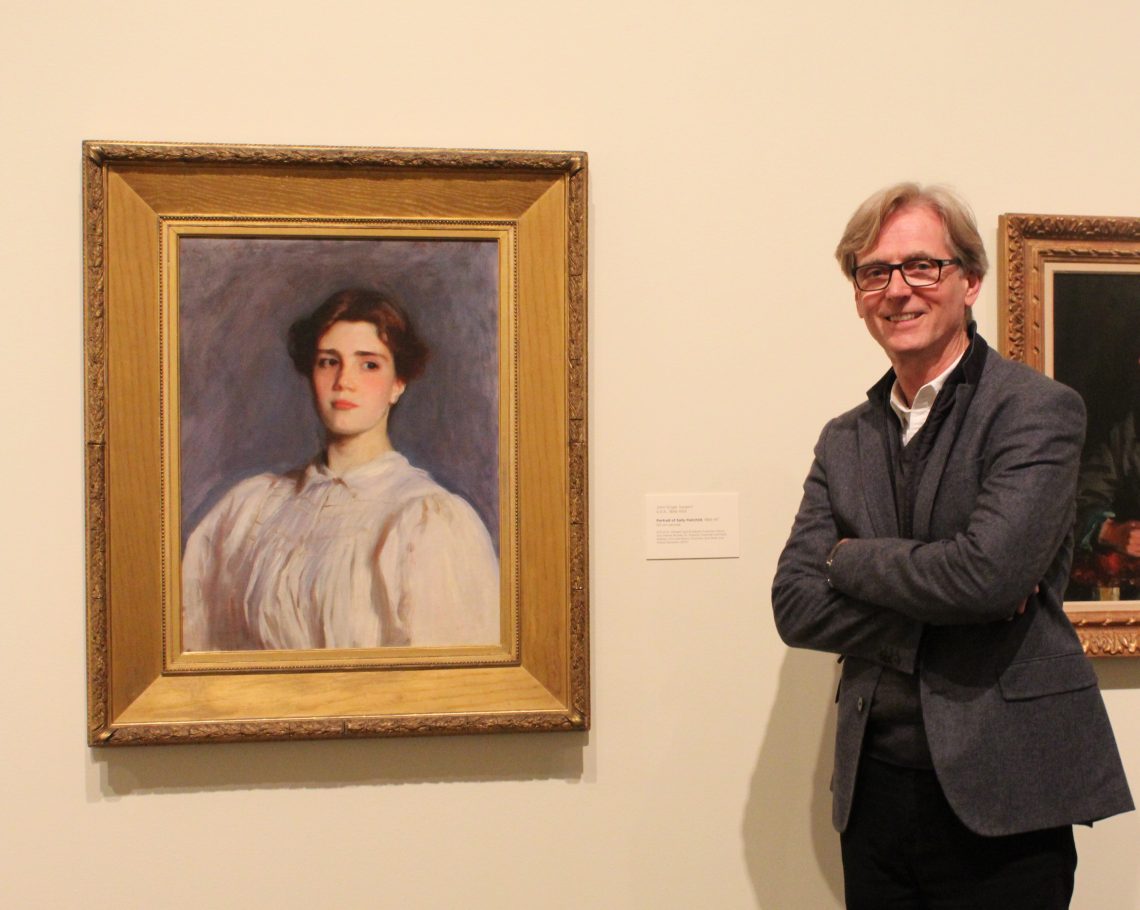
Sally Fairchild painting comes home to the Cantor
Courier's role important in art loans
This month, the striking painting Sally Fairchild (1884–87) by John Singer Sargent is back on display at the Cantor Arts Center at Stanford University, after a three-month stay in Stockholm, Sweden, as part of a major retrospective of the artist’s work. But returning the painting to the Farm was no easy task for Elizabeth K. Mitchell, the Deedee and Burton McMurtry Curator at the Cantor, who went to Stockholm as the courier assigned to bring Fairchild home.
Frigid temperatures in Sweden and missing luggage were part of Mitchell’s journey. When works from the Cantor’s collection are loaned to other institutions, a courier from the Cantor must accompany the work on both legs of the trip. Now, Mitchell and many others, including Stanford Continuing Studies instructor John Peck, who always uses the work in his classes, are happy to have the portrait of the proud-looking Fairchild back on the Cantor’s wall. The painting is “an absolute treasure in our collection and is one of the best examples of 19th-century portraiture the Cantor owns,” Mitchell said.
Courier’s role
Mitchell traveled in September of last year to Stockholm with the work and watched as it was installed in the Nationalmuseum. The Sargent exhibition was the first show after a major remodeling of the museum building. “The staff at the Nationalmuseum of Sweden were happy to have the painting of Sally Fairchild there,” Mitchell said. “It was a gorgeous installation filled with all of Sargent’s greatest works, and she was in a place of prominence by the entrance door.”
Making sure the painting arrived in good shape was part of Mitchell’s job as a courier but that’s only one of the steps. “Then it has to be thoroughly examined and secured on the wall properly, and only then do we all sign off,” she explained.
More recently, in January of this year, Mitchell returned to Stockholm to accompany the fair lady home. However, that trip resulted in her being stranded for three of the five days she was there without her luggage. Luckily, she had brought a winter coat in her carry-on bag as the temperatures were in the teens. But her boots were in suitcase, so she made do with tennis shoes.
“Being a courier is really not glamorous at all,” Mitchell said. “It’s a very high-pressure job, because you have to be with the artwork or aware of its location at all times.”
Painting is prime example for students
But now that the artwork is back home, perhaps no one is more excited than Peck, who has been using the work in his portraiture course for years. “I’ve missed it!” he said. “The work is special because it’s such a clean example of realist portraiture.”
Peck gives each student a black and white reproduction of the painting to copy. “I think Sargent was superb at color and value, so the painting reproduces well in black and white. Students use soft charcoal on toned paper to copy the image. And then the follow up to my class is always a visit to the Cantor to see the painting in person. It really enriches the experience after students have spent time drawing it. They’re usually totally wowed by seeing the original oil painting.”
And there’s another reason Peck and so many others are so happy to have the painting back at the Cantor. “Sargent painted directly from life and captured sitters in a believable way that connects us to these authentic people,” Peck explained. “Sally Fairchild is a perfect example and her backstory—she was one of the first women to attend lectures at Harvard University—makes it even more fascinating.”
Image: Stanford Continuing Studies instructor John Peck at the Cantor Arts Center next to Portrait of Sally Fairchild. (John Singer Sargent (U.S.A., 1856–1925), Portrait of Sally Fairchild, 1884-1887. Oil on canvas. Gift of Dr. Herbert and Elizabeth Sussman, David and Valerie Rucker, Dr. Stephen Sussman and Kelly Watson, Eric and Nancy Sussman, and Dean and Chiara Sussman, 2012.1)
